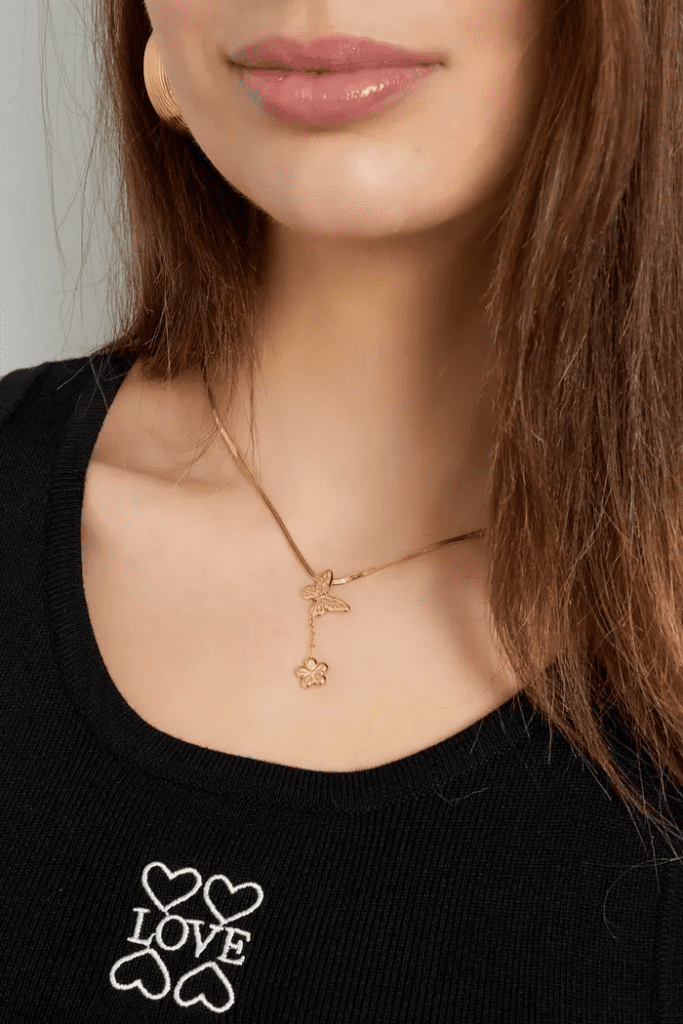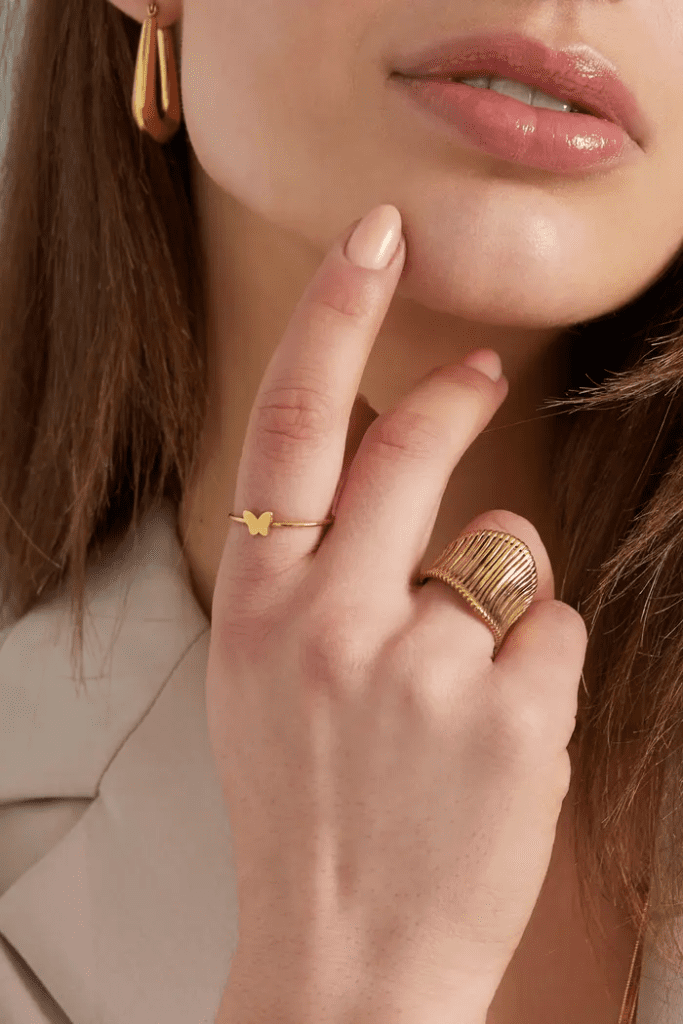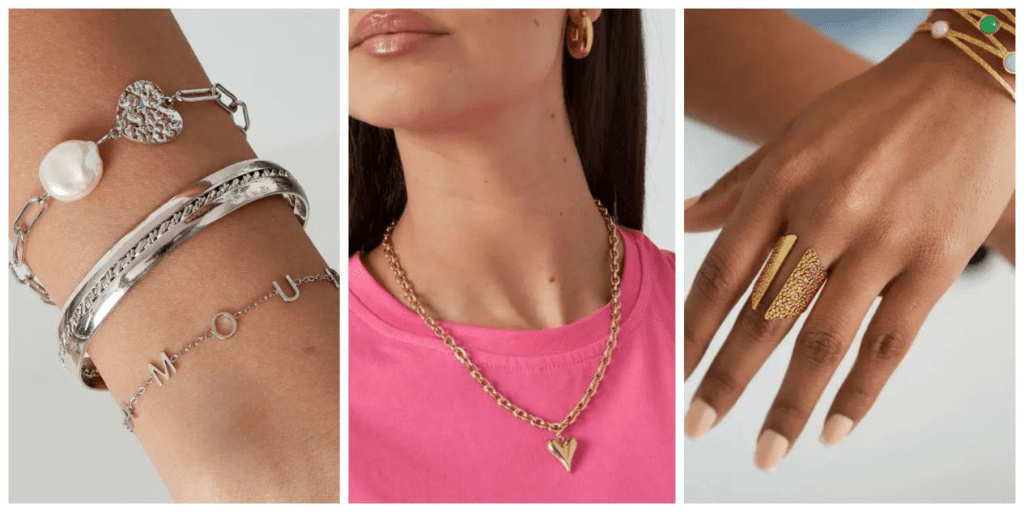Table of Contents
- 1 What is stainless steel?
- 2 What are the top series of stainless steel, and what are their differences?
- 3 Why are there different grades of stainless steel?
- 4 Which stainless steel material is best for making jewelry?
- 5 The Difference Between Grade 304 and Grade 316 Stainless Steel
- 6 Yewang Stainless Steel Jewelry
- 7 FAQs about Stainless Steel Jewelry
When it comes to selecting materials for crafting jewelry, stainless steel stands out as a popular choice. Its durability, resilience, and corrosion resistance make it an ideal material for creating both durable and stylish ornaments.
This article will delve into the distinctions between two common types of stainless steel, 304 and 316, aiding you in selecting the appropriate stainless steel adornments.
What is stainless steel?
Stainless steel is a group of steels that are corrosion-resistant through the addition of alloying elements. Its primary component is iron, with at least 10.5% chromium added to enhance its corrosion resistance and strength. When exposed to air, the chromium in the alloy forms a passive layer during oxidation. This layer acts as a barrier, preventing further corrosion and essentially preventing the alloy from rusting. Other common alloying elements in stainless steel include nickel, molybdenum, manganese, etc., which impart properties such as corrosion resistance. Stainless steel finds applications in various industries, including jewelry, household appliances, and construction materials.
What are the top series of stainless steel, and what are their differences?
Each grade of stainless steel has slight variations in its chemical composition, with the 300 series and 400 series being the most commonly used. Among them, the 300 series stainless steel is the most prevalent, with 304 and 316 stainless steel being popular choices.
300 series stainless steel
The 300 series stainless steel is classified as austenitic stainless steel, comprising iron, carbon, nickel, and chromium, and is non-magnetic. With chromium content ranging from 18% to 28% and nickel content from 3% to 10% in cases of low carbon content, some steels also contain alloying elements such as Mo, Cu, Si, Nb, Ti, N, etc. The 300 series stainless steel exhibits excellent resistance to stress corrosion cracking and is unaffected by heat treatment, making it particularly useful in jewelry.
400 series stainless steel
The 400 series stainless steel is classified as ferritic and martensitic stainless steel, containing 11% chromium and 1% manganese, making it slightly magnetic. This steel also has a higher carbon content. Therefore, the 400 series stainless steel possesses higher strength and wear resistance, but compared to the 300 series, it has slightly inferior high-temperature and corrosion resistance.
Why are there different grades of stainless steel?
The grades of stainless steel typically reflect differences in their composition. For example, 304 stainless steel contains 18% chromium and 8% nickel, while 316 stainless steel contains 18% chromium, 10-14% nickel, and 2-3% molybdenum. These different combinations of elements impart different properties and uses to stainless steel of different grades.
The varying content of these elements determines the type of stainless steel material used in jewelry.
Which stainless steel material is best for making jewelry?
Stainless steel jewelry is typically made from two common grades of stainless steel: Grade 304 and Grade 316.
Grade 304, also known as 18-8 stainless steel, contains 18-20% chromium and 8-10.5% nickel. It is a non-magnetic alloy with the highest corrosion resistance, making it widely used in jewelry making. It has different variants, with the most popular being 304H, 304L, and 304N.
Apart from one additional component, Grade 316 stainless steel is almost identical to Grade 304 stainless steel. Grade 316 stainless steel contains molybdenum.



The Difference Between Grade 304 and Grade 316 Stainless Steel
304 stainless steel and 316 stainless steel are two common stainless steel materials with some differences in performance and applications:
Corrosion Resistance Comparison
316 stainless steel outperforms 304 stainless steel in terms of corrosion resistance. Especially in marine environments or environments containing chlorine, such as swimming pools, 316 stainless steel is better able to resist corrosion. Therefore, if jewelry will be exposed to moist environments or chemicals, 316 stainless steel may be the better choice.
Allergy Reaction Comparison
316 stainless steel typically has better biocompatibility, meaning it is less likely to cause skin allergies or other adverse reactions. This may be particularly important for those sensitive to metals, especially when wearing jewelry for extended periods.
Strength and Wear Resistance Comparison
316 stainless steel is slightly superior to 304 stainless steel in terms of strength and hardness. This makes jewelry made from 316 stainless steel more durable and less prone to deformation or damage.
Gloss Comparison
In appearance, 304 and 316 stainless steel often look very similar because they can both be polished to achieve a similar gloss. Therefore, the difference between them may not be very noticeable in terms of appearance.
Price Comparison
316 stainless steel costs more than 304 stainless steel because it contains more molybdenum, which is a relatively expensive metal.
Grade 316 stainless steel has higher corrosion resistance and lower allergenicity compared to Grade 304 stainless steel. It also excels in heat resistance and other beneficial properties. If you prioritize higher corrosion resistance and biocompatibility when selecting jewelry, and your budget allows, then Grade 316 stainless steel may be the superior choice. However, if you have budget constraints but still require good strength and aesthetic appeal, Grade 304 stainless steel is also a suitable option.
Yewang Stainless Steel Jewelry
Yewang’s stainless steel jewelry is made from either stainless steel 304 or stainless steel 316.

All jewelry is nickel-free, ensuring long-term quality maintenance. It’s the perfect choice for those seeking high-quality stainless steel jewelry.
FAQs about Stainless Steel Jewelry
- Will stainless steel jewelry rust?
Stainless steel jewelry typically does not rust under normal usage conditions because of its excellent corrosion resistance. However, in special circumstances, such as prolonged exposure to saltwater or chlorine environments, slight oxidation may occur.
- How do I clean stainless steel jewelry?
You can clean the surface of stainless steel jewelry with mild soapy water and a soft cloth, then rinse with water and dry thoroughly. Avoid using cleaners containing chlorine as they may damage the stainless steel surface.
- Can stainless steel jewelry cause skin allergies?
Stainless steel is a nickel-free alloy, so stainless steel jewelry generally does not cause nickel allergies compared to alloys with higher nickel content. However, some people may still be sensitive to stainless steel, so it’s advisable to observe for any allergic reactions.
- Is stainless steel jewelry prone to scratches?
Stainless steel jewelry is relatively hard and therefore less prone to scratching. However, slight scratches may still occur over prolonged use due to contact with hard objects.
- Can stainless steel jewelry be worn for extended periods?
Yes, stainless steel jewelry typically has high durability and can be worn for extended periods. They are resistant to oxidation or discoloration and are relatively sturdy for everyday wear.
- How should I store stainless steel jewelry?
It’s best to store stainless steel jewelry separately in a soft cloth pouch or jewelry box to avoid rubbing against other jewelry or hard objects, reducing the occurrence of scratches.
- Can stainless steel jewelry be worn while bathing?
Although stainless steel has good corrosion resistance, it’s best to remove stainless steel jewelry before activities such as bathing, swimming, or doing household chores that may involve contact with chemicals or cleaning agents to prevent its exposure to chemical substances.
